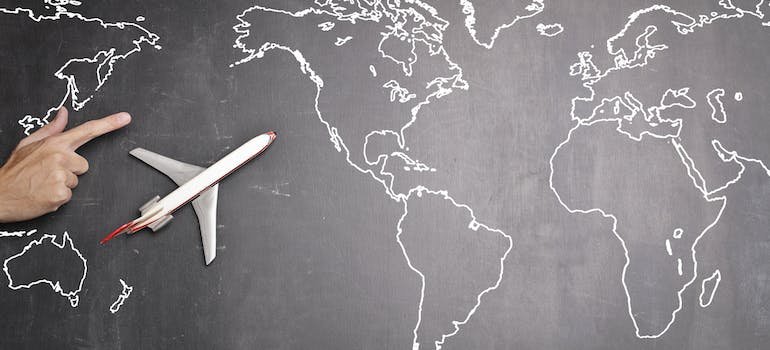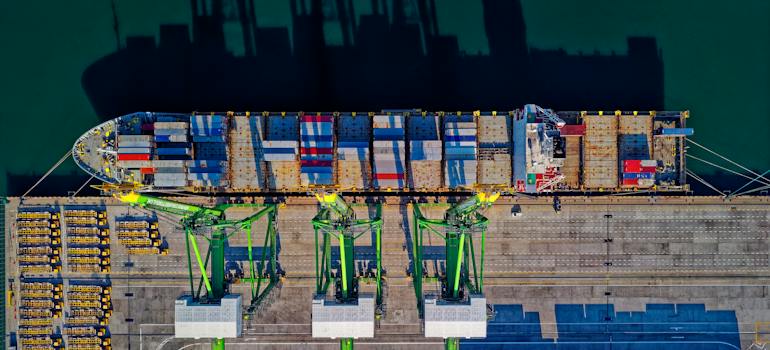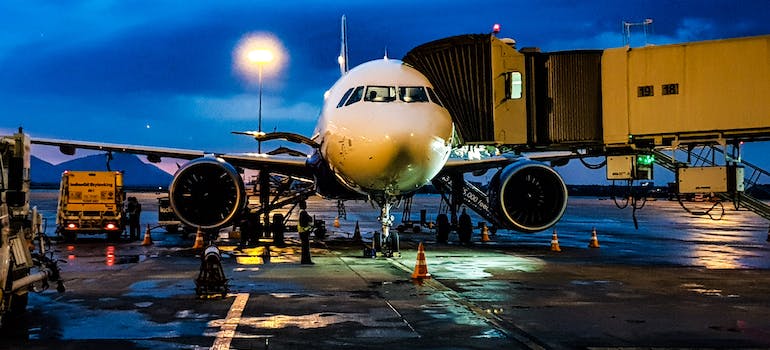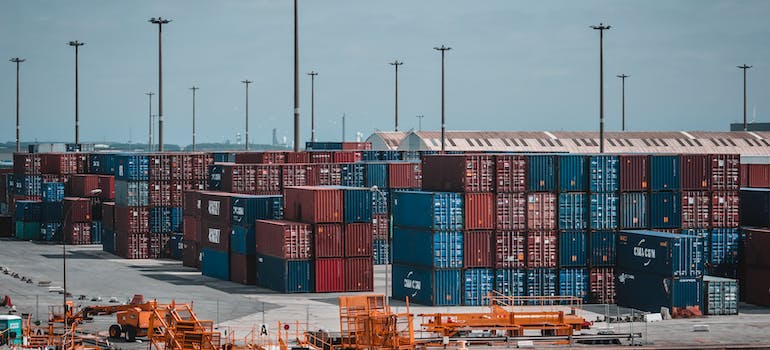Eco-Impact & Cost Analysis of Air, Sea, and Land Transport
Transportation, a cornerstone of global trade and travel, connects people, drives economies, and ensures the flow of goods across continents. Its significance in our daily lives is undeniable, yet it casts a substantial environmental shadow, sparking a global dialogue about sustainability and efficiency. As one of the leaders in the industry, Hansen Bros. Moving & Storage WA explores the eco-impact and cost analysis of air, sea, and land transport. Examining each mode’s environmental and financial aspects, our discussion aims to shed light on their contributions to ecological challenges. We strongly believe in the importance of understanding the evolution of three main types of transport towards sustainability and cost-effectiveness. Such knowledge is vital for developing policies and practices that effectively mitigate environmental impacts. And, at the same time, maintain the efficiency and efficacy that global economic systems rely on.
Air Transport
Air transport is a critical component of global connectivity but also significantly impacts our environment and economy. Understanding its environmental footprint, cost structure, and the potential for sustainable alternatives is key to navigating its future.
Up in the Air: Environmental Challenges
Airplanes are major contributors to air pollution and climate change. The aviation industry is responsible for significant global carbon dioxide emissions, a leading greenhouse gas. These emissions contribute to global warming and affect air quality, leading to health concerns. The high altitude at which planes operate means their emissions disproportionately impact the atmosphere, contributing to the formation of contrails and cirrus clouds that trap heat.

The Price of Flight: Analyzing Operational Costs
The operational costs of air transport are deeply affecting the industry’s economics. Fuel, a major expense, significantly impacts airline profitability due to its price volatility. However, fuel is just one piece of the financial puzzle:
- Aircraft Maintenance: Regular maintenance ensures safety and efficiency but has a high price tag. This includes routine checks, repairs, and parts replacements.
- Safety and Environmental Regulations: Compliance with international safety standards and environmental regulations is non-negotiable but costly. This includes investments in cleaner technology and safety equipment.
- Crew Training and Salaries: Skilled pilots, crew members, and ground staff are essential, and their training and salaries represent a significant portion of operational expenses.
- Airport Fees and Charges: Landing fees, parking charges, and use of airport facilities add to the operational costs.
- Insurance: Given the high risks of air travel, insurance premiums are substantial.
The cost structures in passenger and cargo transportation within the aviation sector also show notable differences. Passenger airlines have a multi-faceted approach to cost:
- Cabin Comfort and Amenities: Investments in passenger comfort, in-flight entertainment, and cabin services are essential to attract customers, directly influencing ticket prices and profitability.
- Marketing and Customer Service: Significant resources are allocated to marketing strategies and customer service enhancements to maintain competitiveness and brand reputation.
In contrast, cargo transport prioritizes efficiency and volume:
- Cargo Handling and Storage: Investment in efficient cargo handling systems and storage facilities to ensure fast turnaround times.
- Logistics and Network Optimization: Developing a logistics network that maximizes cargo volume and minimizes empty flights.
Therefore, while both passenger and cargo airlines grapple with fluctuating fuel and maintenance costs, their approaches to managing other operational expenses differ, reflecting their unique market demands and business models. Understanding these nuances is key to appreciating the financial landscape of air transportation.
Additionally, the cost structures vary significantly between passenger and cargo transportation. Passenger airlines must consider cabin comfort and amenities, influencing ticket pricing and profitability. In contrast, cargo transport focuses more on efficiency and volume, impacting how costs are structured.
Innovating for the Future: Sustainable Aviation
The aviation industry is exploring sustainable alternatives in response to environmental concerns and cost pressures. Biofuels, derived from renewable resources, offer a way to reduce carbon emissions. They can be blended with traditional jet fuel, providing a cleaner, more sustainable energy source. Electric airplanes, though still in the early development, promise a future of zero-emission air travel.
Policy initiatives are also pushing the industry towards greener practices. These include carbon offsetting programs and investments in more fuel-efficient aircraft. These shifts indicate a growing commitment to balancing economic needs with environmental responsibility.
Sea Transport: Charting a Sustainable and Cost-Effective Course
A backbone of global trade, the sea transport sector faces the pressing need to address its environmental impacts and cost challenges. In this landscape, international commercial shipping companies are not just key players in commerce but also in pioneering efforts for ecological conservation and cost-efficiency.

Guarding Marine Life
The oceans bear witness to the environmental cost of sea transport. Oil spills, one of the most visible and damaging aspects, wreak havoc on marine ecosystems. These incidents, often catastrophic, underline the urgency for responsible practices in maritime operations.
Beyond oil spills, the shipping industry also grapples with other pollutants like waste and chemicals, contributing to ocean pollution. The health of marine life and ecosystems hangs in the balance, prompting a critical examination of current practices.
Operational Costs and Economic Scales
Running a fleet across the seas is financially demanding. Fuel, vessel maintenance, and compliance with international standards significantly affect operational costs. For international shipping companies, these costs are financial figures and factors influencing global trade patterns.
The economies of scale in cargo shipping highlight the intricate balance between operational efficiency and cost analysis of air, sea, and land transport. Larger vessels and optimized routes have become strategic choices to control expenses while maximizing capacity.
Innovations for a Sustainable Future
The push towards sustainability is reshaping maritime operations. Cleaner fuel alternatives are gaining traction, offering a way to reduce harmful emissions. Companies increasingly consider LNG (Liquefied Natural Gas) and biofuel as viable options. Additionally, innovations in ship design focus on enhancing efficiency and reducing emissions. These efforts reflect a growing commitment within the industry to not only comply with environmental regulations but to lead in the stewardship of our oceans.
Sea transport has been at a crossroads where the need for economic viability converges with environmental responsibility for quite a while. The sector’s future hinges on successfully navigating this intersection with commercial shipping companies Seattle has being fundamental in steering the industry towards a more sustainable and cost-effective path.
Land Transport: On the Road to Efficiency and Sustainability
A key player in global and local logistics, land transport stands at the intersection of environmental impact and cost management. The focus is on road and rail transport’s ecological footprint, operational costs, and the strides made towards sustainability and efficiency.

The Environmental Footprint of Land Travel
Road and rail transport significantly contribute to environmental challenges. Emissions from vehicles, especially those running on fossil fuels, are a major source of air pollution and greenhouse gases. This pollution not only affects climate change but also impacts urban air quality, leading to health issues. While generally more efficient than road transport, rail transport still has its share of environmental concerns, particularly in regions where fossil fuels power trains.
Cost Dynamics in Land Transportation
Operational costs in land transportation widely vary between road and rail systems.
For road transport, significant expenses are incurred in:
- fuel,
- vehicle maintenance, and
- infrastructure upkeep.
In rail transport, substantial costs are associated with:
- track maintenance and
- locomotive care.
Efficient cost management is a critical practice in this sector, exemplified by any experienced moving company Washington State has. These companies excel in optimizing routes and meticulously maintaining their vehicle fleets, which is key to reducing operational costs. Their strategies highlight the crucial balance land transportation companies strive to achieve between operational efficiency and effective budget management.
Paving the Way with Sustainable Solutions
The push for sustainability is driving innovation in land transport. Electric vehicles (EVs) are gaining prominence, promising a future of lower emissions for both personal and commercial transportation. Expanding public transport systems in urban areas, including electric and hybrid buses, reduces reliance on individual cars, thereby decreasing urban congestion and pollution.
Besides, advancements in rail technology are making trains cleaner and more energy-efficient. These developments signal a shift in land transport, where environmental considerations are becoming as important as cost and efficiency.

Comparative Cost Analysis of Air, Sea, and Land Transport
In an era where sustainability is not just a choice but a necessity, comparing the eco-impacts and costs of air, sea, and land transport reveals critical insights. These modes’ environmental footprints and cost structures provide essential data for shaping future transportation strategies.
Eco-Impact Comparison Across Modes
Air transport stands out for its significant contribution to greenhouse gas emissions, particularly at high altitudes, intensifying its climate impact. In contrast, while less carbon-intensive per ton-mile, sea transport grapples with issues like oil spills and ocean pollution, posing severe threats to marine ecosystems.
Through the widespread network, land transport predominantly affects urban air quality and contributes to land pollution. These modes’ carbon footprints and ecological metrics highlight various environmental challenges, each demanding targeted solutions.
Assessing Cost-Effectiveness in Transportation
The cost structures of these transportation modes are as diverse as their environmental impacts. With high fuel and maintenance costs, air transport often translates into more expensive operational models, especially passenger services. Despite the increased investment in vessels and port infrastructure, sea transport benefits from economies of scale, making it a cost-effective choice for bulk cargo.
Land transport, particularly in road logistics, faces fluctuating fuel prices and infrastructure expenses, impacting cost-effectiveness. Additionally, environmental policies are increasingly influencing transportation costs. Regulations aimed at reducing emissions are prompting industries to invest in cleaner, more efficient technologies.
While beneficial for the environment, this shift often comes with increased operational costs, at least in the short term. The intersection of environmental impact and cost in transportation is thus a matter of active management and a strategic element in pursuing sustainable development.

Future Trends and Potential Solutions
The transportation sector stands on the brink of significant change, driven by emerging technologies and evolving policies. These developments reshape how we move goods and people and are key to meeting global environmental objectives. For example, cutting-edge technologies are set to revolutionize transportation:
- Electric and Autonomous Vehicles: Land transport increasingly embraces electric vehicles (EVs), which offer a cleaner alternative to fossil fuel-powered vehicles. Autonomous vehicles, still in development, promise to optimize road efficiency and safety.
- Advanced Aviation Technologies: In air travel, innovations like biofuel-powered planes and more efficient aircraft designs are emerging to reduce carbon footprints.
- Green Shipping Initiatives: Sea transport is witnessing a shift towards LNG-fueled ships and improved vessel designs for better fuel efficiency.
When it comes to government policies and international agreements, regulation is essential in steering the transportation sector toward sustainability. Governments worldwide are implementing policies that encourage the adoption of green technologies.
These include tax incentives for EVs, regulations for lower emissions in aviation, and stricter controls on maritime pollution. International agreements, like the Paris Agreement, are crucial in setting global standards and encouraging cooperation among nations to reduce transportation-related emissions.
Sustainable Cost Analysis of Air, Sea, and Land Transport: A Keystone in Environmental Strategy
Sustainable transportation is not just a goal for WA and USA shippers like freight companies Seattle has; it’s a critical component in the broader strategy to achieve global environmental objectives. The transportation sector can significantly contribute to mitigating climate change by reducing emissions, minimizing ecological impacts, and adopting cleaner technologies. The future of transportation, therefore, is deeply intertwined with our collective environmental destiny, underscoring the need for continued innovation, supportive policies, and international collaboration.
Why Choose Us
History
Hansen Bros. Moving & Storage is locally owned and operated by the same family for four generations, since 1890. We have a well-established reputation for service quality and reliability with a high percentage of repeat household and commercial clients.
Professionalism
We’re a certified ProMover by the American Moving and Storage Association with A+ rating with the Better Business Bureau, voted “Best in Western Washington” in 2009 and from 2011 to 2016 by KING5. Our company is fully licensed and insured and member of WMC and AMSA.
Value
Hansen Bros. Moving & Storage provide free, no-obligation in-home estimate and competitive rates, including low minimum rates for shipments moving under 300 miles. We’ve set a refund policy for unused packing materials and three Puget Sound locations to help clients save on travel fee costs.



